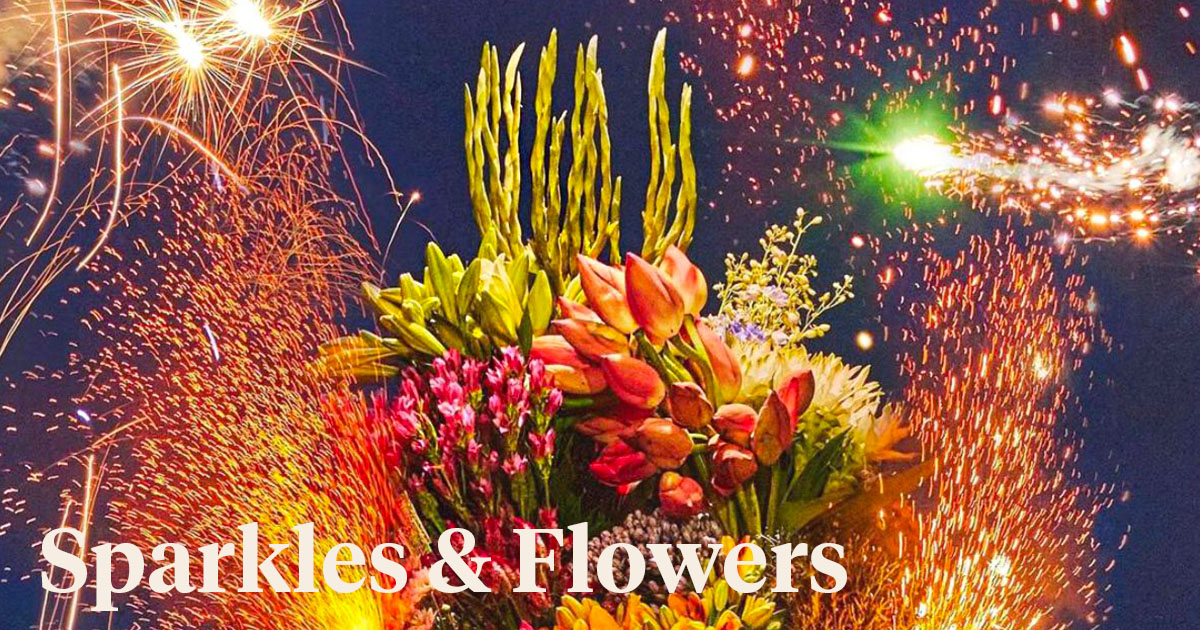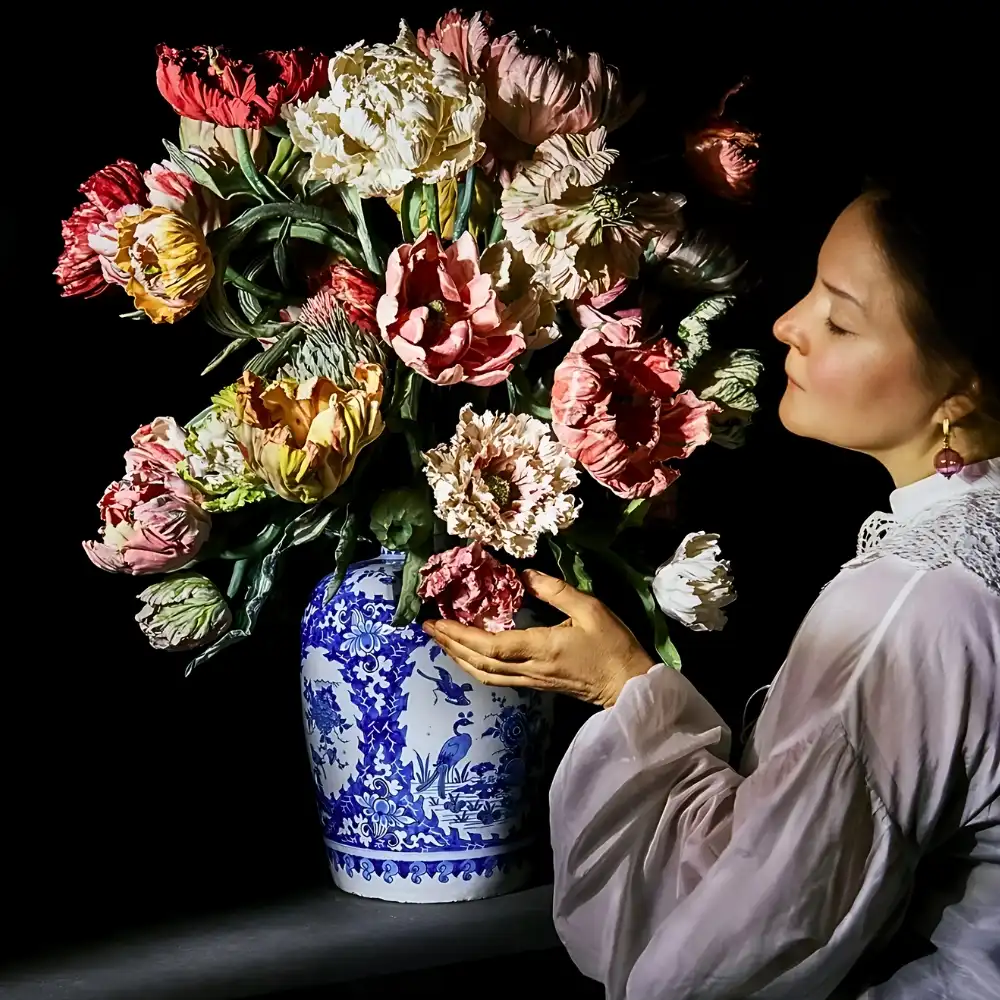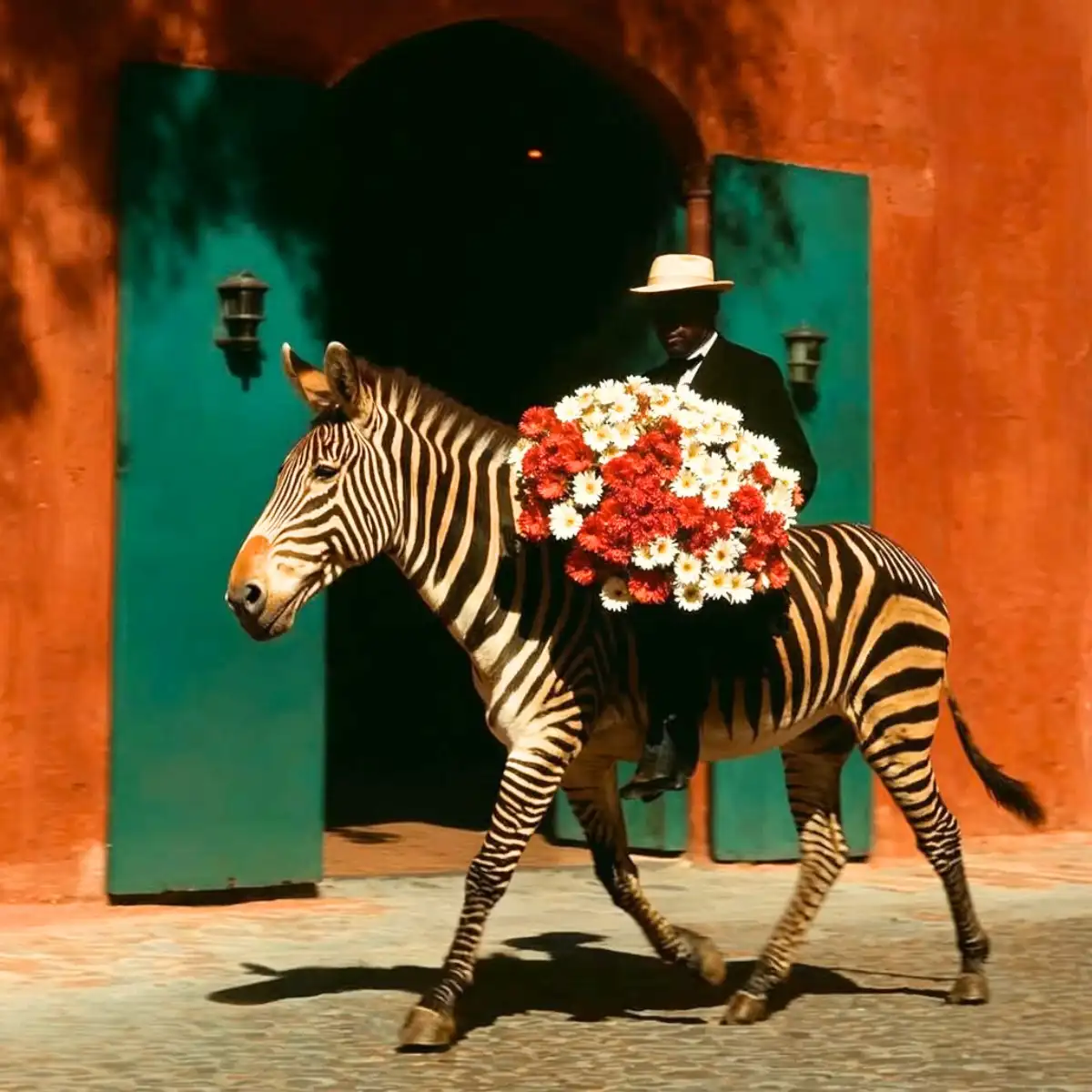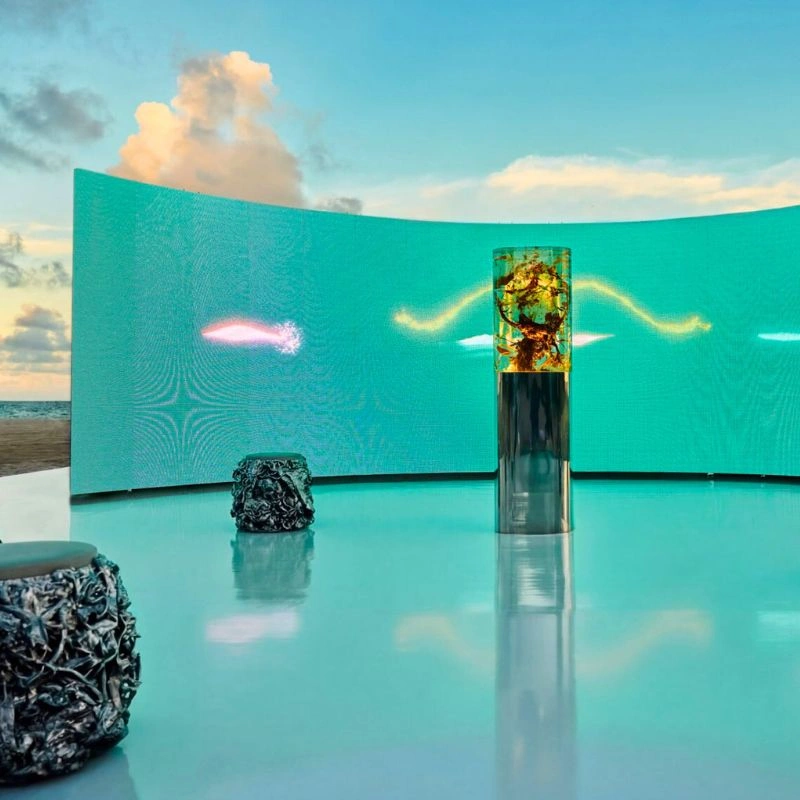If you've been following Azuma Makoto and his art for some time now, you know how magical and talented his hands are to create anything he desires. This time, he has managed to create a blossoming botanical sculpture amidst the intense colors of fireworks and the result is nothing but a creative floral bomb.
A Botanical Flower Sculpture In Between Fireworks by Azuma Makoto
Azuma Makoto, a Japanese artist noted for his inventive plant sculptures, enjoys experimenting with different locations and backdrops. From the deep blue of the oceans to the cold corners of Japan, and even into space, he places elaborate bouquets front and center, showing floral beauty from unrivaled views.
The artist returns to the terra firma for his latest work 'Hanabi', a floral sculpture that combines the transitory beauty of flowers with the fleeting brightness of fireworks. Conceived in the fertile grounds of Makoto's imagination, this awe-inspiring creation marries the ephemeral beauty of flowers with the transitory magic of fireworks.
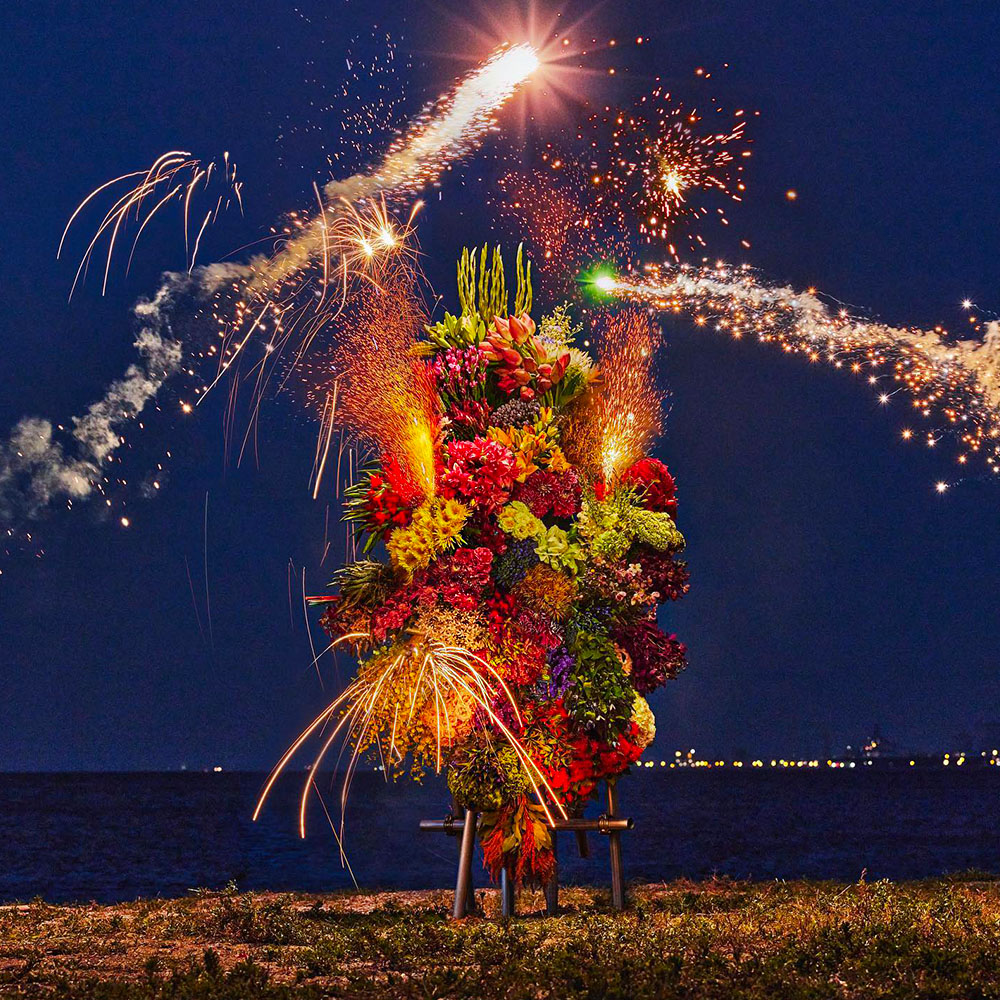
The installation is made up of fifty different species of flowers obtained from all over Japan. The flowers are placed in a cascading pattern to create a vibrant and energetic show. The artwork is a reminder of the transient nature of both human and flower existence. Flowers fade away in the same way as explosions do. However, in their brief existence, they both add beauty and delight to the world. In case you haven't seen other sculptures by the artist, read 'Temporary Sculptures by Azuma Makoto Freeze Hundreds of Flowers on a Snow-Coated Lake
' to further see the depth of his botanical work.
Makoto's Newest Floral Installation 'Hanabi' Echoes Nature's Beauty
His most recent creation using flowers and fireworks is a resemblance and celebration of the impermanence of life. Fireworks have traditionally been associated with the spirit of Japanese summer, dazzling the night sky and enthralling observers during seasonal celebrations. Although the pandemic briefly dampened these celebrations, statewide fireworks festivals have returned this year, signaling a good turn of circumstances.
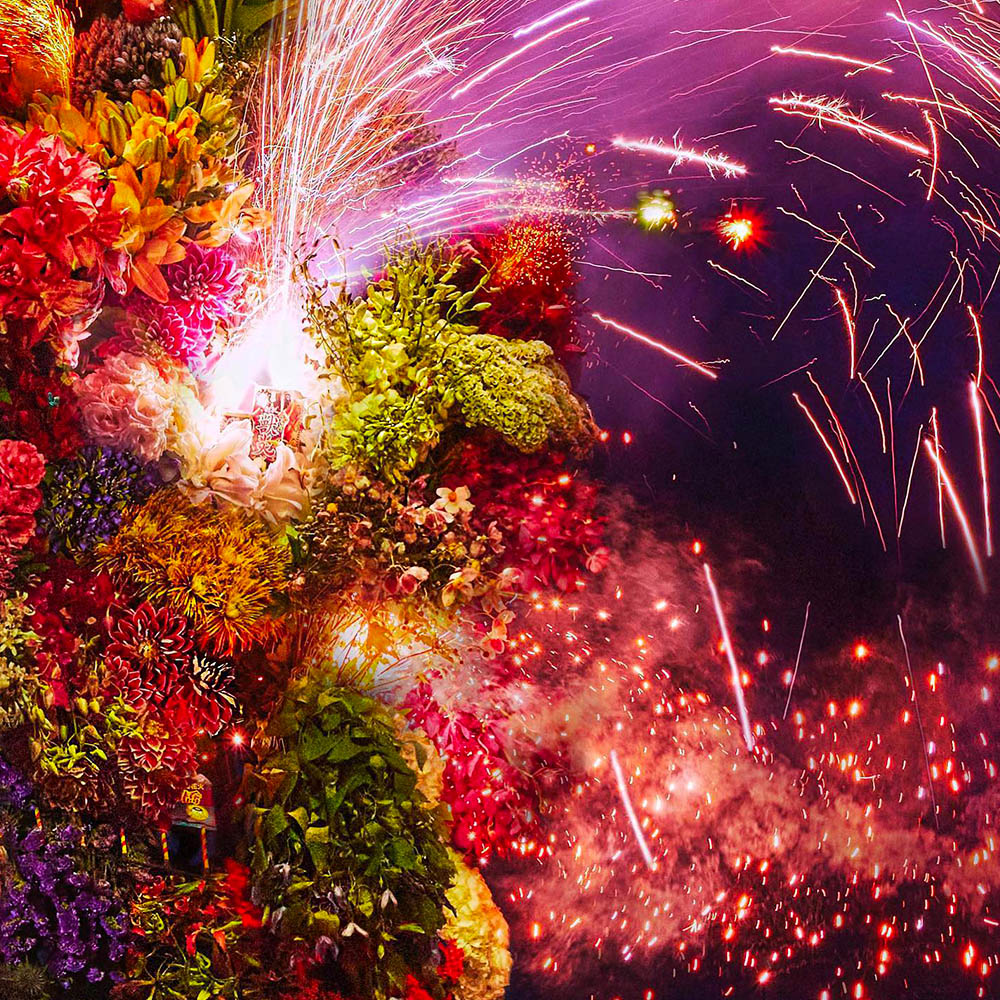
In this setting, Azuma Kamoto's latest artwork 'Hanabi' incorporates the wonder of fireworks. He's linked the short lives of flowers to the fast detonation of pyrotechnics. As a result, the botanical artist has created art that depicts fleeting moments in a powerful and emotive manner. The vibrant colors of the flowers signify the natural world's beauty, while the transitory nature of the pyrotechnics represents the fleeting nature of life. This impermanence is deliberate because it is intended to elicit feelings of beauty and fragility. Makoto's sculptures not only celebrate the beauty of nature but also connect with the deeper meaning of impermanence.
The Fusion of Flora and Pyrotechnics
You may be wondering what the process was like. Makoto went through a laborious effort to create this outstanding vision. He selected a variety of vivid and exotic flowers, each chosen for its distinct color, form, and meaning. Orchids, chrysanthemums, and dahlias were among the plants chosen because of their remarkable visual appeal and cultural significance in Japan. The artist then assembled these blossoms into a gigantic spherical structure floating in mid-air. As a result, the sculpture looks to be suspended in time and space, like a frozen explosion of life itself.
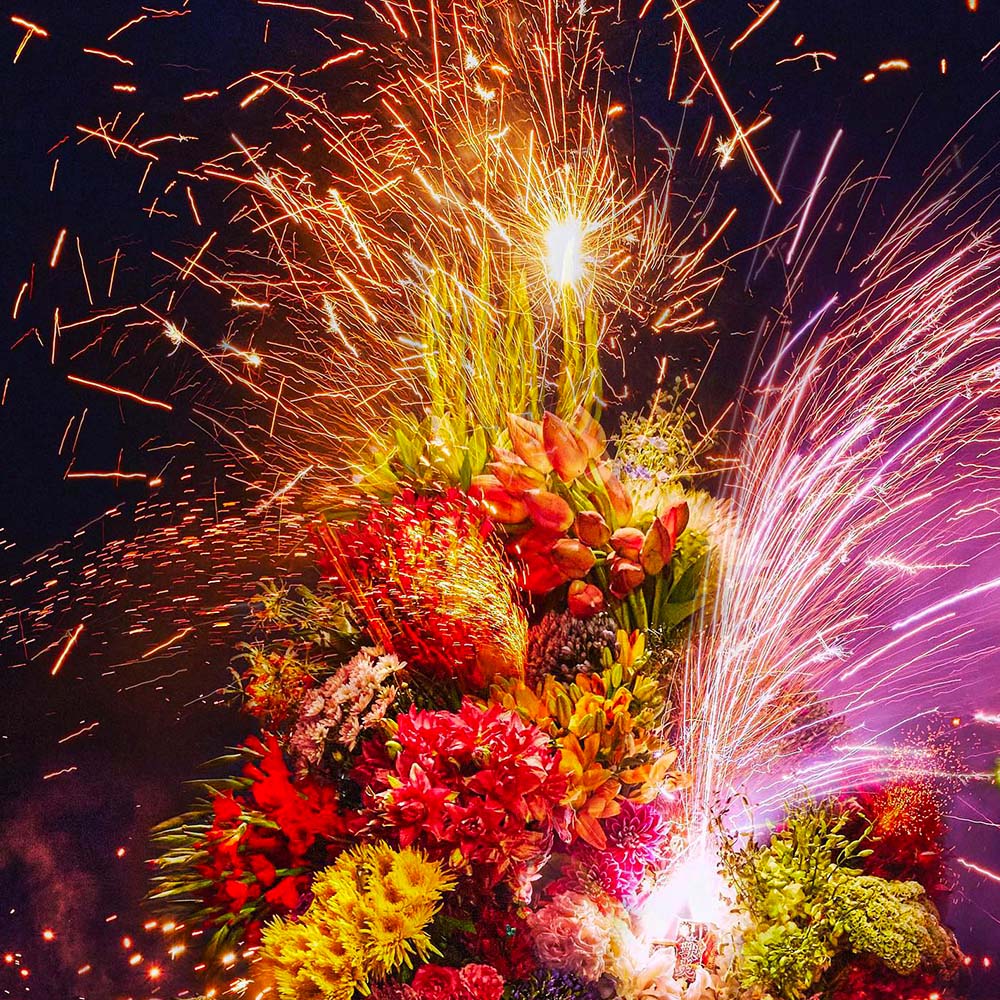
The enchantment of 'Hanabi' extends beyond its static beauty. The artwork truly comes to life when the sun sets and the night sky fills with glittering stars. Tiny LED lights and pyrotechnic devices are meticulously concealed within the flowery sphere to recreate the fascinating patterns and colors of pyrotechnics. As night falls, the botanical sculpture livens itself, showering the surroundings with bursts of vivid colors and flickering lights, similar to a fireworks display.
A true piece of art that fuses flowers, colors, textures, and visions. Azuma Makoto has done it again. Check out 'Get Submerged Into Azuma Makoto’s Latest Botanical Sculpture in Japan’s Deep Sea' to see more of Makoto's work!
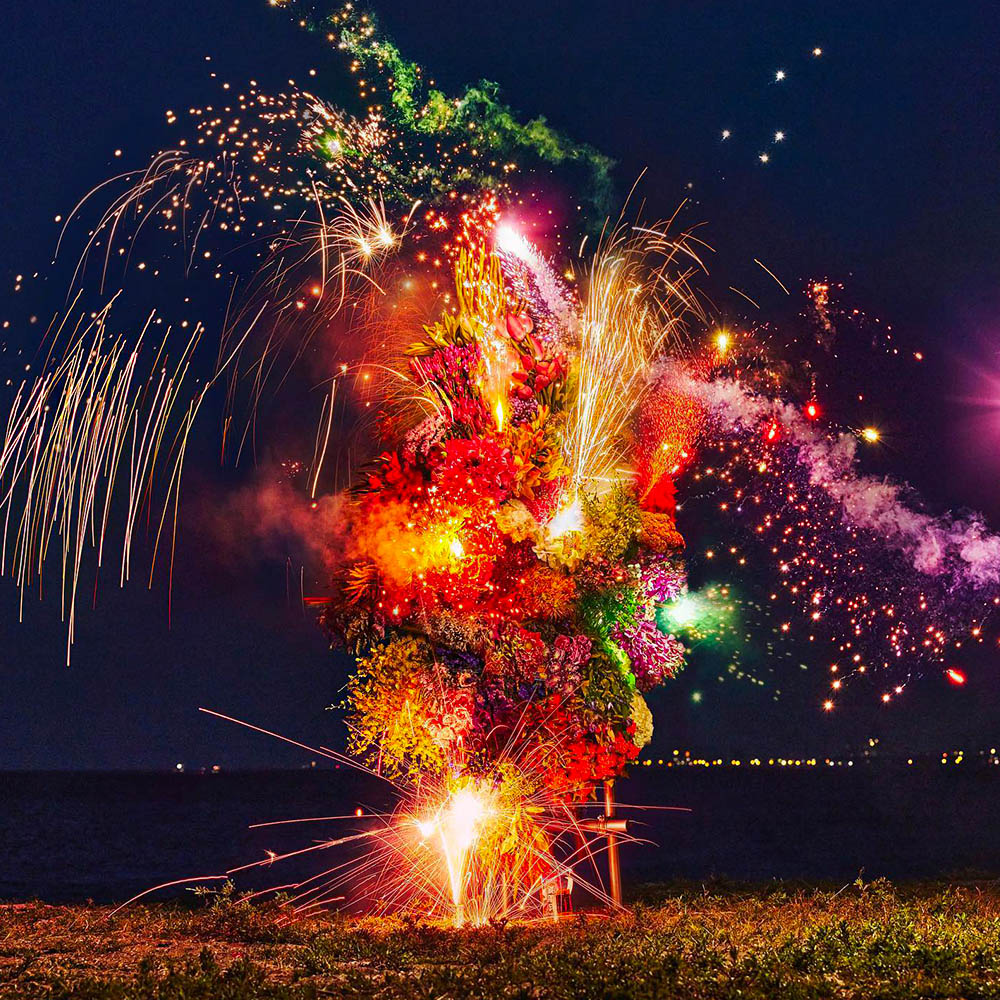
All photos by @azumamakoto.

